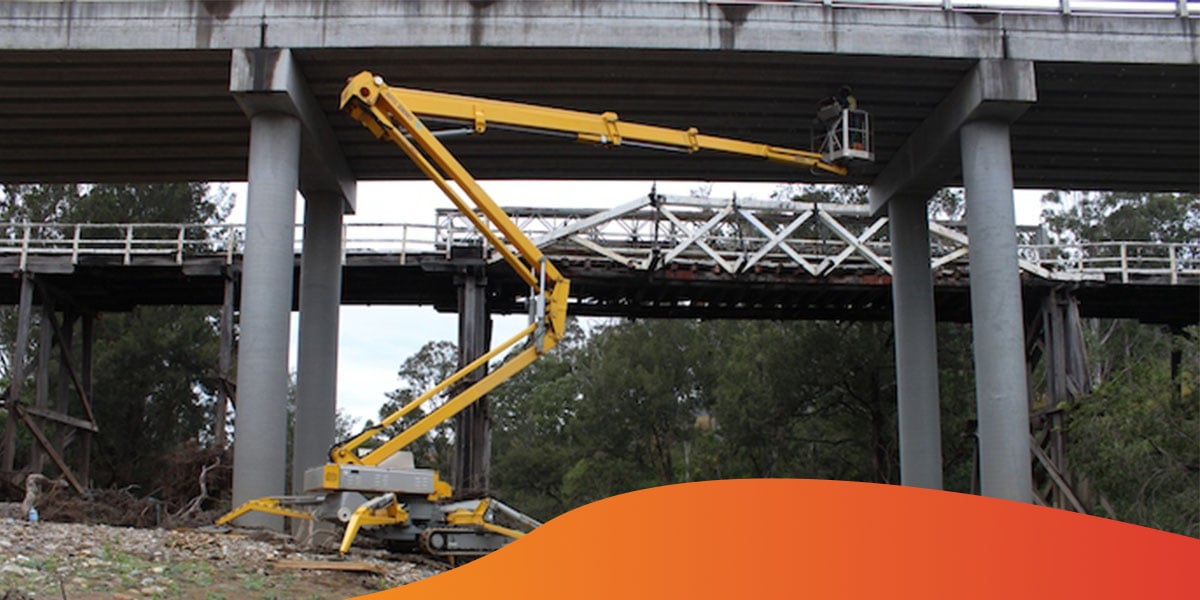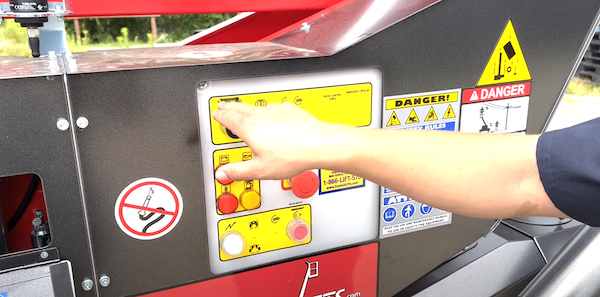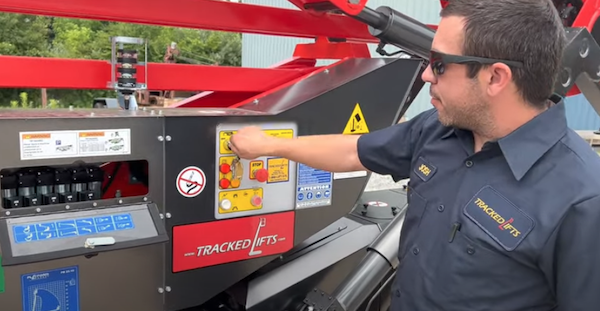Aerial lifts are powerful equipment that help you accomplish tasks efficiently and effectively. These heavy-duty machines require training and certification to operate safely. If you are an arborist, painter, facility maintenance manager or another professional who uses these machines daily, it's crucial to understand aerial lift safety tips, protocols and training requirements.
Importance of Aerial Lift Safety
All aerial lift operators must receive certification to stay safe and avoid putting themselves or others in danger. Receiving certification also helps you avoid Occupational Safety and Health Administration (OSHA) violations — a costly risk for businesses.
The National Institute for Occupational Safety and Health reported 1,380 operator injuries between 2011 and 2014 due to aerial or scissor lift accidents. Most were a result of slips, trips and falls. Being aware of aerial and spider lift safety risks can help you prevent them:
- Falls: Falls from elevated platforms are a common cause of injury and even death for operators. The lift can become unstable due to poor weather conditions, uneven surfaces or being struck by another object.
- Falling objects: Tools and other materials in the aerial lift basket could potentially fall and cause injuries.
- Overhead hazards: Aerial lifts conduct electricity and can pose risks if they come into contact with overhead power lines. Setting up the lift on unstable ground can also lead to tip-overs.
- Struck by objects: Workers should be aware of their surroundings and notify their superiors about any unfinished building materials at a jobsite to avoid being hit by objects.
Following Proper Safety Protocols
By receiving training and following proper aerial lift safety practices, you benefit from the following:
- Reduction in workplace accidents: Following safety protocols, including training and safe operation practices, can help reduce workplace accidents, injuries or deaths, promoting a safer workplace.
- Increased efficiency and productivity: Accidents can halt operations and lead to costly downtime. By following proper safety measures, you minimize the risk of accidents and keep operations productive. Ensuring worker safety also instills confidence, allowing personnel to stay focused and productive.
- Avoidance of violations and fines: Failure to receive training and certification and follow OSHA safety protocols can lead to fines in the hundreds to thousands. Staying on top of regulatory compliance codes can help avoid penalties and ensure operational success.
Choosing Quality Equipment
Choosing the proper lift equipment is essential for maintaining your safety. Tracked aerial lifts designed specifically for your industry offer a more secure, safe way to operate compared to methods like manual climbing.
At Tracked Lifts, we offer a wide selection of lifts featuring safety controls and advanced features to streamline operations and deliver the highest levels of safety to workers. They are easy to learn and straightforward to operate — helping you use the equipment safely and correctly.
Our lifts are designed specifically for arborists and other professionals, handling rigorous tasks in all weather conditions and on uneven terrain.
Aerial Lift Training and Standards
Following aerial lift training and standards promotes a safe workplace environment.
1. OSHA Compliance and Communication
OSHA has several guidelines for maintaining aerial lift compliance. These include safety measures, inspections and operator training on the correct work position, personal protective equipment, closing and access gates, operator controls, working height limits, and wind conditions.
2. Aerial Lift Training Programs

OSHA's aerial lift training and standards include courses on maximizing workplace safety while operating these powerful machines. OSHA recommends repeating courses every three years to stay current on best practices and changing safety standards. You must also complete retraining if you have a workplace incident involving an aerial or scissor lift, discover hazards related to these lifts on your jobsite and other conditions.
The American National Standards Institute (ANSI) also provides guidance on training, machine design and the safe use of aerial platforms, which it now designates as mobile elevating work platforms.
3. Lift Operator Training
OSHA requires that employers train all workers who operate or work with aerial lifts. Required training topics include:
- An explanation of electrical, fall and struck-by hazards
- Skills and knowledge needed to operate an aerial lift or mobile scaffold
- Recognizing and avoiding unsafe working conditions
- Safe operating procedures — including load capacity
- Pre- and post-operation safety inspections
- Procedures for dealing with hazards
- Manufacturer instructions and safety requirements
Key Components of Aerial Lift Safety
OSHA outlines proper aerial lift safety practices to help you prevent accidents, meet compliance and ensure the safety of your workers.
Pre-Operation Inspections
Before operating an aerial lift, you must follow a pre-inspection check to ensure the equipment and its components are in safe operating condition. This includes checking for proper fluid levels and tire damage. It also includes inspecting the battery and charger, lower-level controls, steering and brakes. Next, you should inspect the lift's components, like operating and emergency controls, personal protective devices, and other machine parts.
If you notice defective components, do not operate the aerial lift. Remove defective equipment until the proper repairs are completed. Regular maintenance keeps your lift working safely while preventing costlier repairs later on. Additionally, you must inspect your work zones for hazards and take corrective actions to eliminate them before and during operation.
Safe Operation Practices
Create an easy-to-understand checklist consisting of the following safe operation practices:
- Correct work position: All operators must stand securely on the basket's floor. Workers should also be aware of overhead clearance and objects and, if possible, position the lift between overhead hazards.
- Personal protective equipment: Workers must also wear a full body harness or personal fall arrest system with a lanyard attached to the boom or basket during operation.
- Closing access gates or openings: When closing access gates or openings, workers must not climb or lean over handrails or guardrails. You should also not carry objects larger than the platform or drive with the platform raised unless permitted by the manufacturer.
- Operator controls: Workers must not operate at lower-level controls without permission from workers in the lift.
- Working height limits: Do not go over the vertical or horizontal working height limits for your specific equipment.
- Wind conditions: Do not use the lift in high winds above the manufacturer's guidelines to avoid tip-overs and other accidents.
Our Collaboration With Noble Oak Safety & Training
When you purchase equipment from Tracked Lifts, you receive more than high-quality lifts. You also receive a support package of harnesses and pads, superior service and now, the option to include industry-leading training. We are proud to announce our partnership with Noble Oak Safety & Training, giving you the option to receive comprehensive operator training with each tracked lift earning 8 to 16 CEUs.
The program meets and exceeds OSHA and ANSI standards, ensuring operators are compliant and proficient in the latest safety practices and techniques from day one. Our partnership emphasizes our shared commitment to enhancing safety standards and improving the education of all arboriculture professionals.
Enhance Your Skills & Safety: Training Resources Available for Tracked Lift Owners
The importance of aerial lift safety and training cannot be overstated. Following proper aerial lift safety practices and knowing regulatory compliance codes can promote a safer work environment and prevent costly fines, keeping your business productive and successful.
At Tracked Lifts, we prioritize providing safe, reliable and versatile ways for our clients to accomplish their aerial tasks. With over 15 years of industry experience, you can rely on us to have the tools you need to get the job done safely and efficiently.
Our lifts feature advanced safety features that are purpose-built for tree care and other industries, and our partnership with Noble Oak Safety & Training ensures you have the safety training and resources to succeed. Reach out to our experts today to learn about our aerial lifts and schedule a demo!




